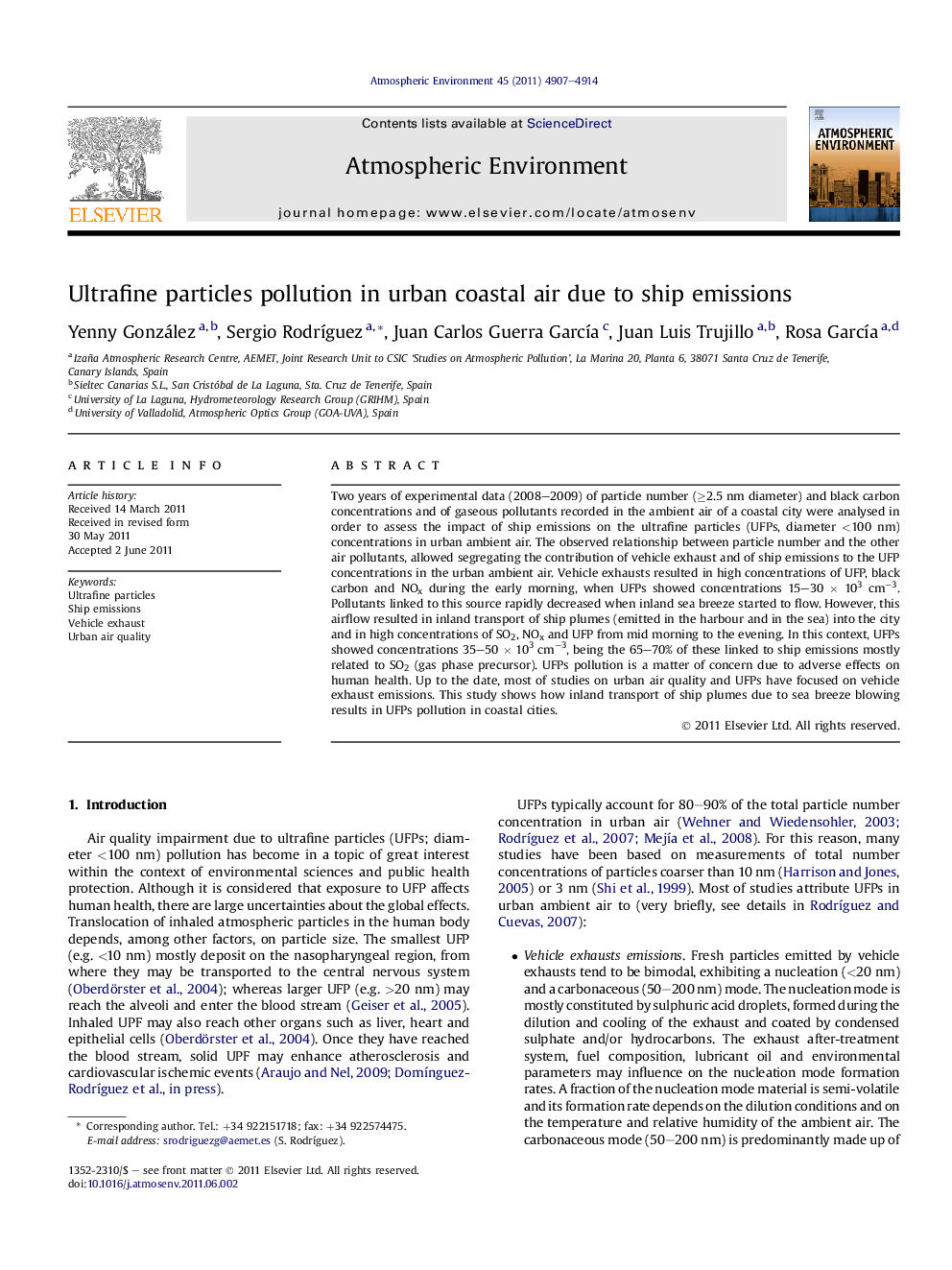| Article ID | Journal | Published Year | Pages | File Type |
|---|---|---|---|---|
| 4439598 | Atmospheric Environment | 2011 | 8 Pages |
Two years of experimental data (2008–2009) of particle number (≥2.5 nm diameter) and black carbon concentrations and of gaseous pollutants recorded in the ambient air of a coastal city were analysed in order to assess the impact of ship emissions on the ultrafine particles (UFPs, diameter <100 nm) concentrations in urban ambient air. The observed relationship between particle number and the other air pollutants, allowed segregating the contribution of vehicle exhaust and of ship emissions to the UFP concentrations in the urban ambient air. Vehicle exhausts resulted in high concentrations of UFP, black carbon and NOx during the early morning, when UFPs showed concentrations 15–30 × 103 cm−3. Pollutants linked to this source rapidly decreased when inland sea breeze started to flow. However, this airflow resulted in inland transport of ship plumes (emitted in the harbour and in the sea) into the city and in high concentrations of SO2, NOx and UFP from mid morning to the evening. In this context, UFPs showed concentrations 35–50 × 103 cm−3, being the 65–70% of these linked to ship emissions mostly related to SO2 (gas phase precursor). UFPs pollution is a matter of concern due to adverse effects on human health. Up to the date, most of studies on urban air quality and UFPs have focused on vehicle exhaust emissions. This study shows how inland transport of ship plumes due to sea breeze blowing results in UFPs pollution in coastal cities.
Graphical abstractFigure optionsDownload full-size imageDownload high-quality image (194 K)Download as PowerPoint slideHighlights► Urban ambient air quality. ► Ultrafine particles emissions by ships. ► Inland transport of ship plumes by sea breeze. ► Ultrafine particles emissions by vehicle exhausts. ► Sources and processes contributing to ultrafine particles.
